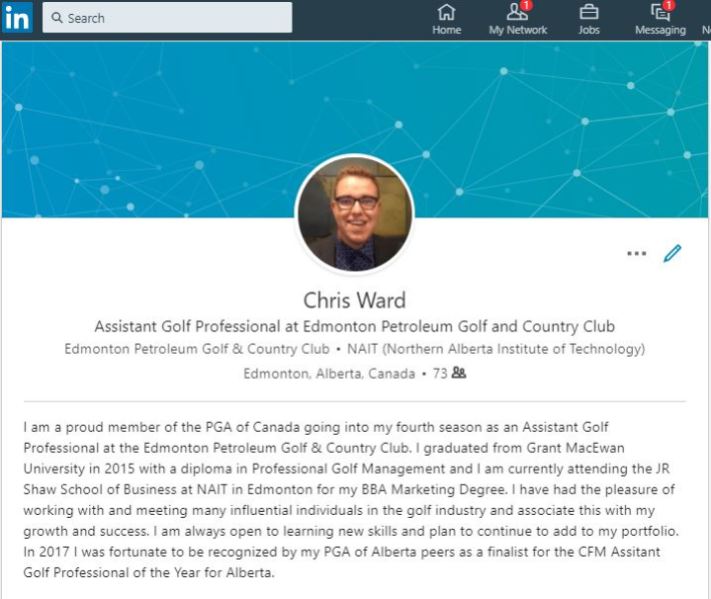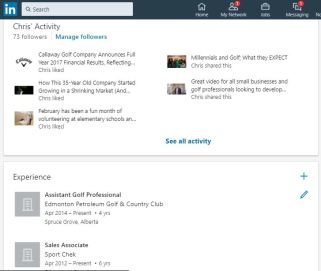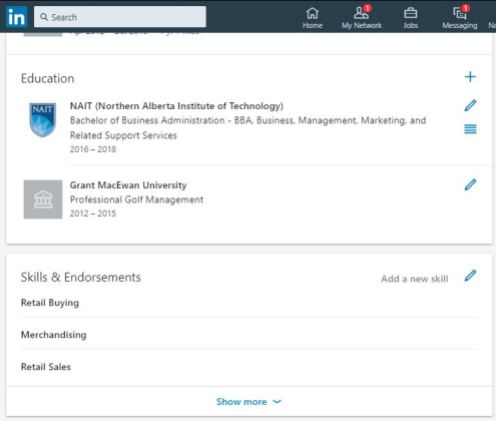Instagram basics
First of all, what is Instagram and why is it so popular? Instagram is a social media app that was built with the purpose of sharing photo and video content with other users and followers. If your business or brand has any visual content that showcases you, Instagram is a must do for your business.
The photo and video rich media aspect of Instagram is what gives it fantastic marketing capabilities if done properly. Instagram also provides users the ability to edit their content before uploading with filters and other editing tools that can give your content a professional look. If your looking to showcase and get feedback on the visual aspects of your business “Instagram has 500 million monthly active users [and] there are 95 million photos uploaded to Instagram every single day” (Alexander, 2016, para. 2). Instagram users are also very engaging on the platform, of the 95 million photos uploaded “4.2 billion photo likes per day” (Alexander, 2016, para. 2) are sent out.
Instagram allows for personal user accounts but also allows you to create a business branded account. When setting up your account for your business keep in mind that in order to switch your existing page or a new page to a business account you will have to access your settings found on your profile page. Due to Instagram being owned by social media giant Facebook, it is best to already have a business Facebook page built to link to your account. With an Instagram account set up for business purposes, it allows you to access Instagram Insights. With Insights it lets you analyze your posts and reach to see things you are doing well and things that can be done better.
Building your business strategy for Instagram
One of the best ways to get started with your business strategy for Instagram is to look at other successful business on Instagram to see the types of posts they are making. Looking at golf company Callaway’s Instagram page it shows some of their staffers using their product for successful tournament finishes, along with captivating product photos. Callaway also features “Insta Golf Tips” on their page like the one below to provide valuable content for their followers.
Another good way of getting some ideas for your business Instagram page is by brainstorming content ideas. When doing this list all of the products and services you offer. For a golf professional, all the forms of lessons you can provide, coaching programs, and clinics are all services you can provide. Next, list all of the benefits that your product or service can provide to your consumers. Now think of how people use your product or service, the more creative you are at this point, the more content ideas you will have. Lastly, think of the situations when people are the happiest with your service. This is where you can get peoples attention with content that reminds of the good feelings they may have from your service. This may be as simple as hitting that bunker shot perfectly that you’ve been struggling with, or possibly the feeling of shooting your lowest score yet.
Looking at your competitors content is also a great way to understand ways that you can improve your Instagram content. It also allows you to see who is following them and figure out what you can do to reach some of their followers. You also can find ways to separate yourself from your competitors by looking at the competition to find things that you can do better than they currently are doing.
Creating a posting schedule can be very effective for growing your Instagram following. By scheduling posts, it makes it easier to plan content while increasing user engagement. Third party applications allow for scheduling posts made simpler, look for applications such as ScheduGram and HootSuite.
Using the Instagram app
When setting up your Instagram business page it is important to fill out as much of the profile section on Instagram as you can. The more information provided here will allow for your customers to reach you easier, one of the most effective tools is adding your website landing page in the URL section of the profile. Also, keep your bio and other text sections of your profile concise, people generally use Instagram to stay away from long blocks of text like the ones you see on other platforms. If they want to learn more about you they can have a redirect to your website from your Instagram page.
After your profile is complete the next step is to start posting content, this can be done from the middle camera icon on the mobile app. You can choose to pick content from your camera roll on your device or to take a photo or video from within the app. After you select a photo or video to post the next step is to use Instagrams filter and edit tools to enhance your photo to increase the visual appeal of your content. After the content is edited accordingly you will hit the next button found on the top right of the screen to move on to the post’s caption and share section. In this section, it is important to provide a caption for your content along with relevant hashtags to improve your reach. After this is completed you can select your linked social media accounts to post your content to.
The best way to gain visibility through Instagram is to interact with the Instagram community. You can follow others in your industry, and like and comment on their posts accordingly. The more times your businesses page appears on Instagram the bigger your reach on the platform gets. The same way you interact with other Instagram pages on the platform will be the same thing others are doing with your own page. It is important to review your likes and comments on your content to gain feedback on what users are liking and saying about your business.
Using Instagram stories is a great tool to post content from a live event for a 24-hour window after posting. This tool is great for showing a particular event without cramming your Instagram feed. I recently used this tool for my @wardogolf Instagram page over the past weekend at the Edmonton Golf Show to show some of the different guest speakers and other golf lesson content. I plan to use the stories tool to share live content from other events throughout the golf season to show community involvement and other things my followers may find valuable. Instagrams recent update of stories allows users to pin stories they have created to their profile in icons to be displayed above their main content.
Fine-tuning your content to increase reach
In order for your Instagram account to be most effective, there are a few easy tricks to stretch the reach of your content.
Use the following five points to get the most of out of your posts:
- Link your other social media platforms to Instagram to reach out to other established platforms with your visual appealing content from Instagram.
- Use filters to enhance your photos, in some cases #NoFilter is best. Look to match your filters to the message your brand is trying to promote with the photo.
- Use relevant hashtags to connect with more users that are not following you. For golfers in Edmonton try #GolfYEG, #Golf, #AlbertaGolf.
- Add a location to your posts to show your followers where to find you. The easier your brand is to find, the more customers can connect with you.
- Use a Repost app to add content to your page from your other users. This is a great way to interact with the community while having to do little to no extra work.
Using Instagram for business tools
Look for the bar graph icon found on your Instagram profile page to access Instagram Insights. Insight allows you to see top posts for your current page and new followers. Instagram Insights gives us the ability to see how many times our posts and page have been seen in a given time period. This is a great way to measure the success of your posts and give your Instagram measurability.
Instagram also has a blog dedicated to it business users and provides tips and tricks for business owners to improve their Instagram presence. The Instagram for Business Blog allows you to stay up to date with best practices, announcements, and updates.
How to integrate Instagram with other platforms you have.
A great way to add visually rich media to your websites is by linking your Instagram with your website. Most web design companies will have the ability to add an Instagram widget to your website similar to mine found on my homepage.
How Instagram can boost your business as a golf professional
The best way to increase awareness of your golf instruction or golf course is to feature photos and videos of exactly what you do. Try posting a live look at what one of your lessons looks like and this will give an insight of your teaching style and can lead to more lessons. A golf instructor who has done this very well is George Gankas, George uses Instagram to showcase his teaching methods and how an actual lesson would go. By posting videos of lessons he has increased awareness of the services he provides and also shows his unique personality that has gained him the respect of many tour players and golf professional alike. This post below shows one of the great drills he uses with students, it also shows his laidback approachable style that has got him to over 92,000 followers on Instagram.
Instagram is also great for running contests and giveaways to grow your brand, by running contests that are engaging and has other users post creative photos of your product and service it will allow others to do marketing for you. Giving away a golf lesson or a dozen golf balls goes a long way for increasing your reach if the contest is engaging.
Works Cited
Alexander, A. (2016, December 3). Instagram for Business [Video File]. Retrieved from https://www.lynda.com/Instagram-tutorials/Welcome/533221/552957-4.html

















